Living in a small town in the countryside has its pros and cons. One of the pros (or cons) being that if you work in an area outside of the ordinary, most people know about it. This happened to me, living in a very small town in southern Denmark, working as a teacher at a cultural boarding school. For those that don’t know, this is a folk high school – I’m not sure how to explain it, but it’s a place where mostly young adults come to stay for 4-5 months, studying subjects out of interest and passion, without any kind of graduation. I primarily teach music, but also darkroom courses and taking photo assignments, mostly portrait work, band photos and album covers. All purely analog.
One day one of my neighbors – who knows this is what I do – came to show me some stuff he found while cleaning out the attic. What he had found was a small box of (poorly stored) glass plate negatives, apparently from World War I, an old camera, a small soldier’s notebook and an iron cross medal! The negatives where all developed and some of them seemed to be in a more or less bad condition, but some of them where ok.
He told me that his grandfather’s uncle had been drafted to fight for the Prussians in the First World War, during a time where this part of Denmark was under Prussian government (1864-1920). Most people in the area were still danish-minded, but being drafted for war, you didn’t really have a choice. Deserting from the Prussian army would lead to prison or death penalty.
The plates
Knowing about my darkroom teaching, he asked me if it was possible in any way to make copies on photographic paper, and asked me to make a pair of each, one for him and one for the local historical museum.
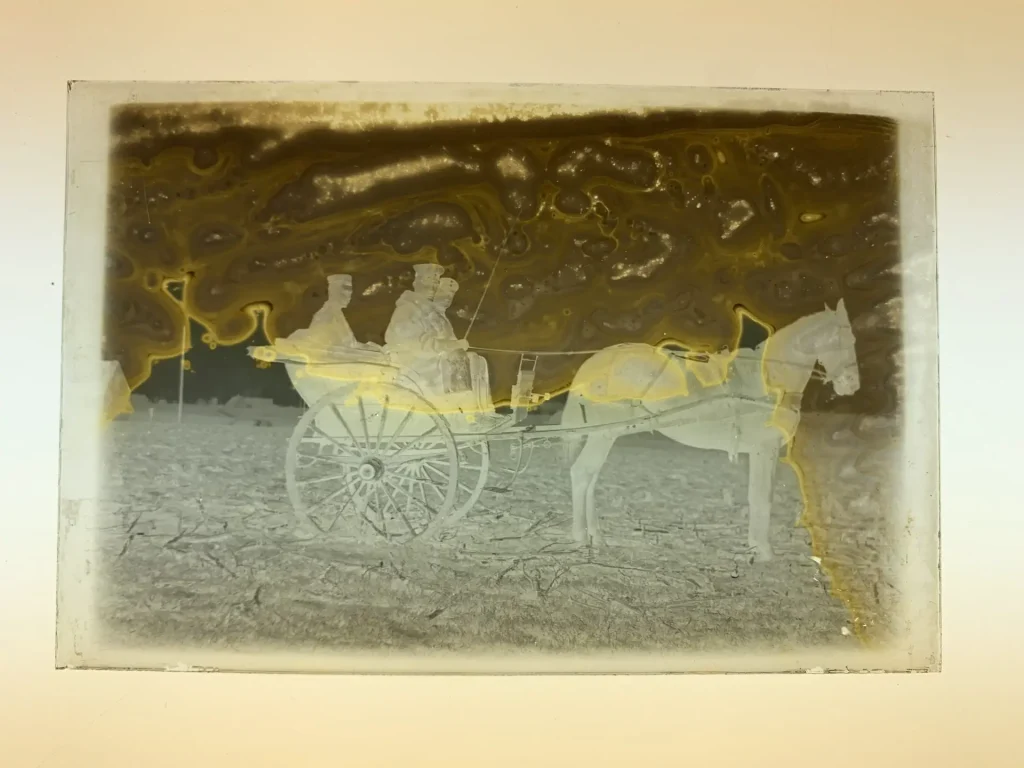
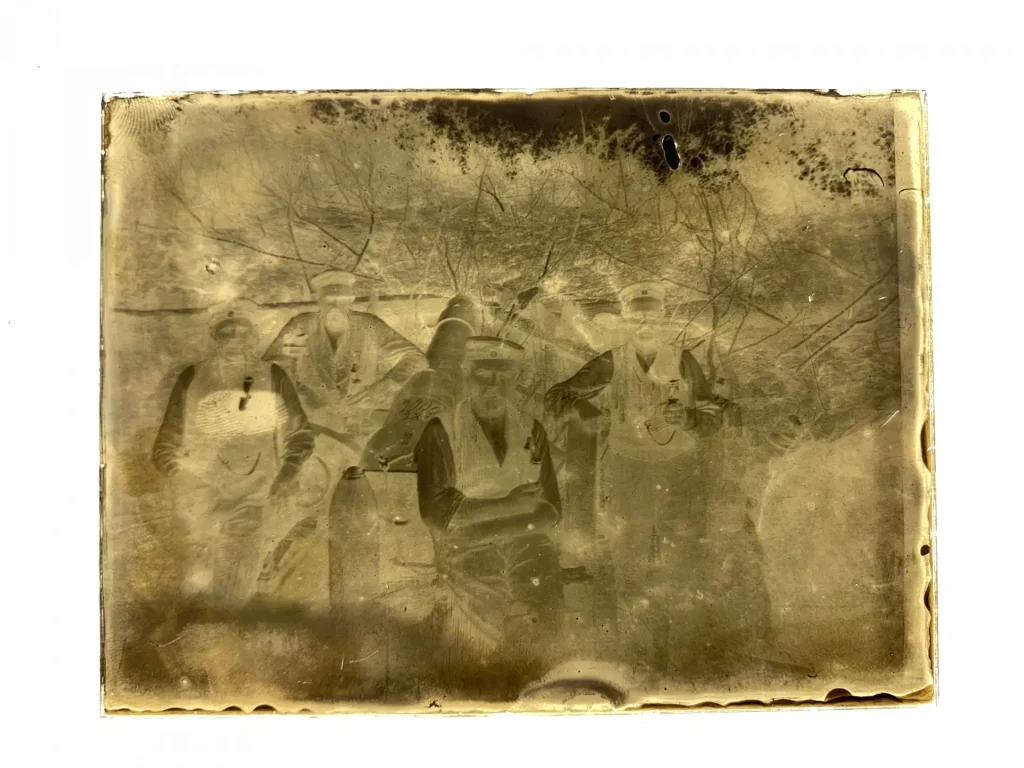
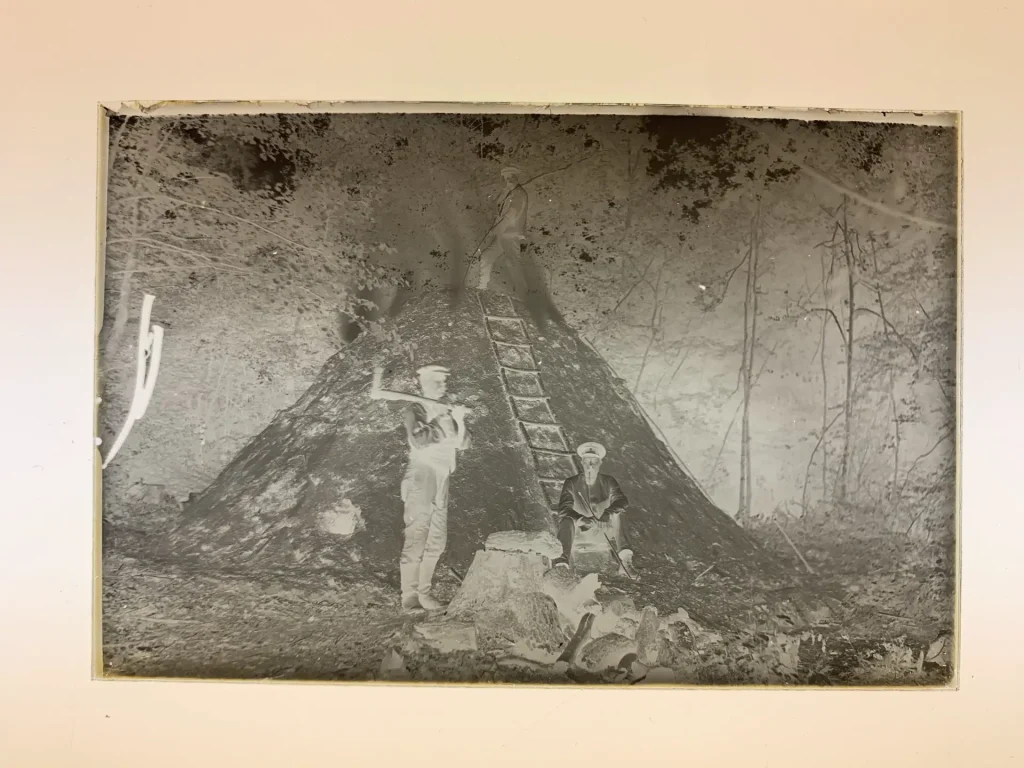
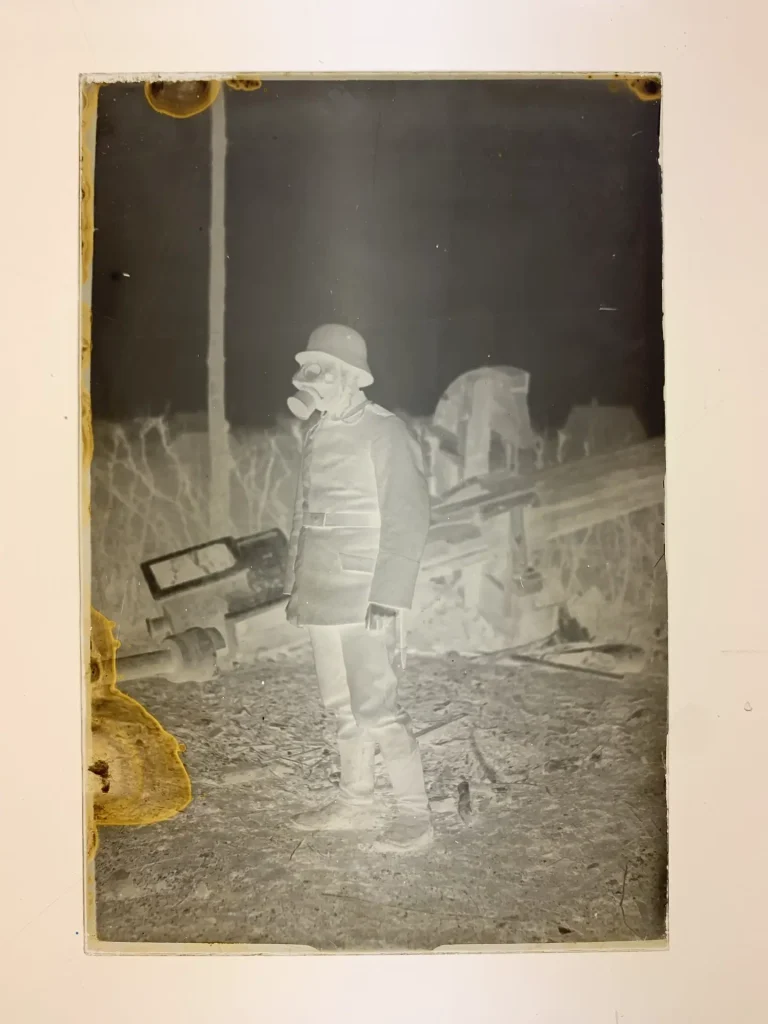
Looking at the glass plates, I knew it would be a challenge to get good tonality and detail from most of them. Their bad condition was not exactly inspiring. But the fact that these plates had been physically exposed right there around 1915-1917, and that the photographer at that time put these exact plates in the camera, right in front of these exact people, intrigued me so much!
It literally gave me goosebumps thinking about the historical aspects of these possible images. Using my phone camera and inverting the colors on the screen, we had a short preview, showing that there was actually images of quite remarkable quality, even after all these years in bad storage.
Darkroom work
So I went into the darkroom and started working on the plates. I made contact prints on baryt paper, using multigrade filters in combination to get the best possible contrast and exposure. There was quite some difference between the quality of the individual plates, as some were in worse condition than others and thus more difficult to print. But seeing those images come to life in the developer under the red lights really gave me one more round of goosebumps! The people in the images looked so alive, even though they were made in a completely different time, under very different conditions than how most people make photographs today.
After developing all of the contact prints, I decided that they would be even better if I toned them in sepia toner, so I did that and I really think that made them look just right.
I’ve been experimenting with making my own dry plates, using Foma emulsion on lacquered glass plates, so I’m relatively used to handling glass plate negatives, but knowing the history of these plates made me a little nervous – I felt as though I was holding them almost like a newborn baby!
The prints
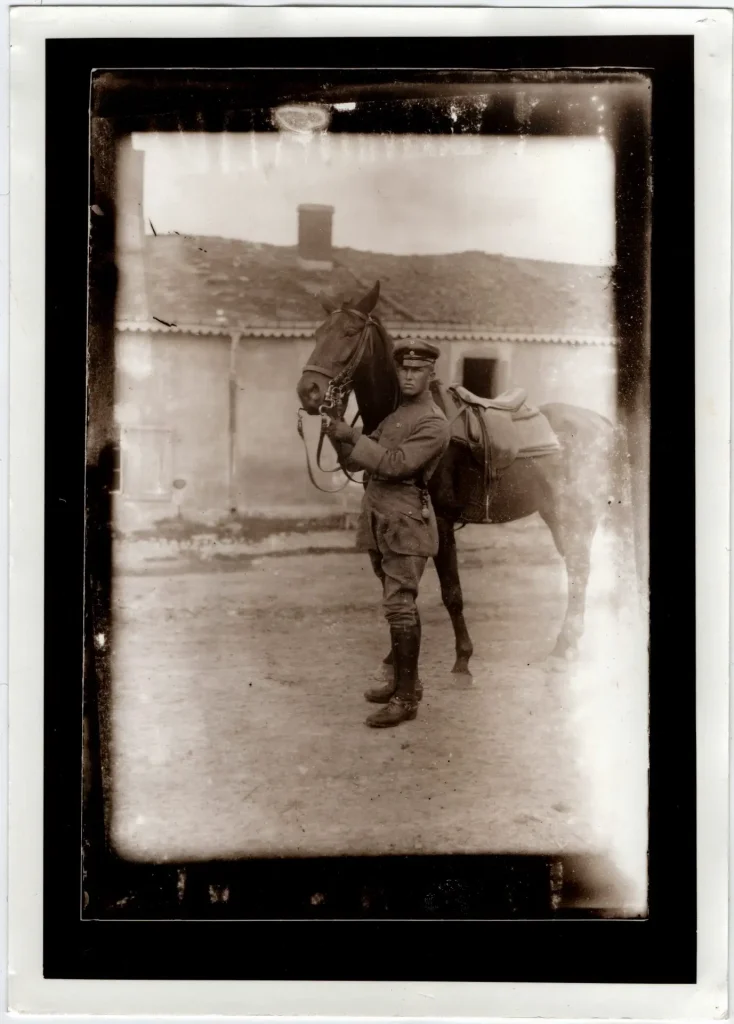
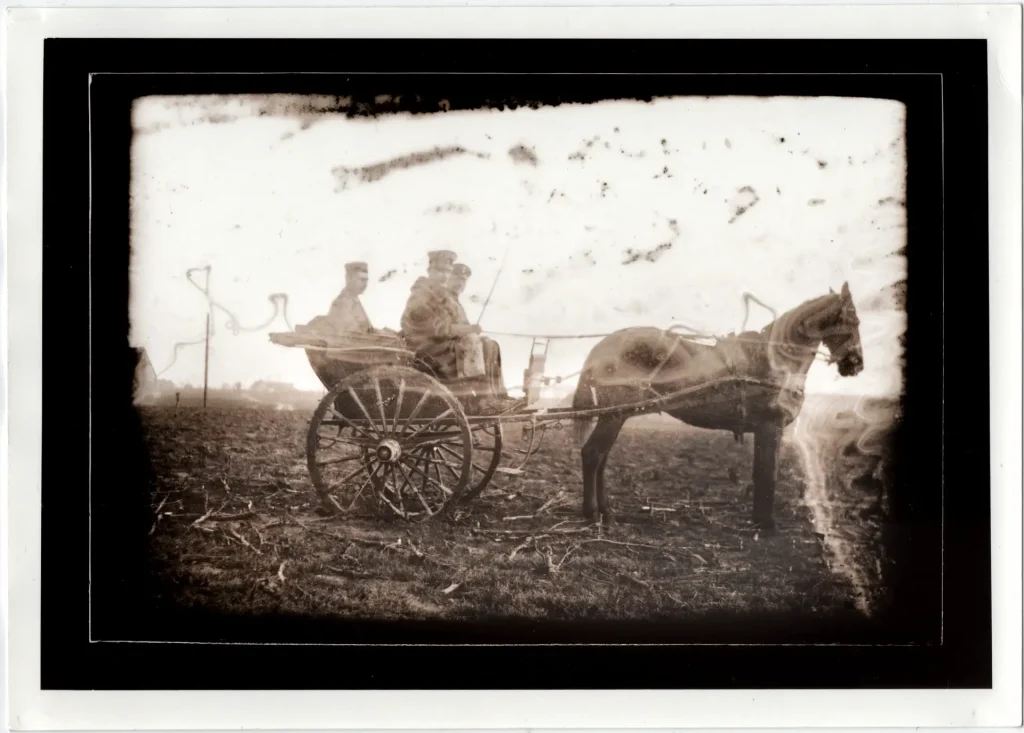
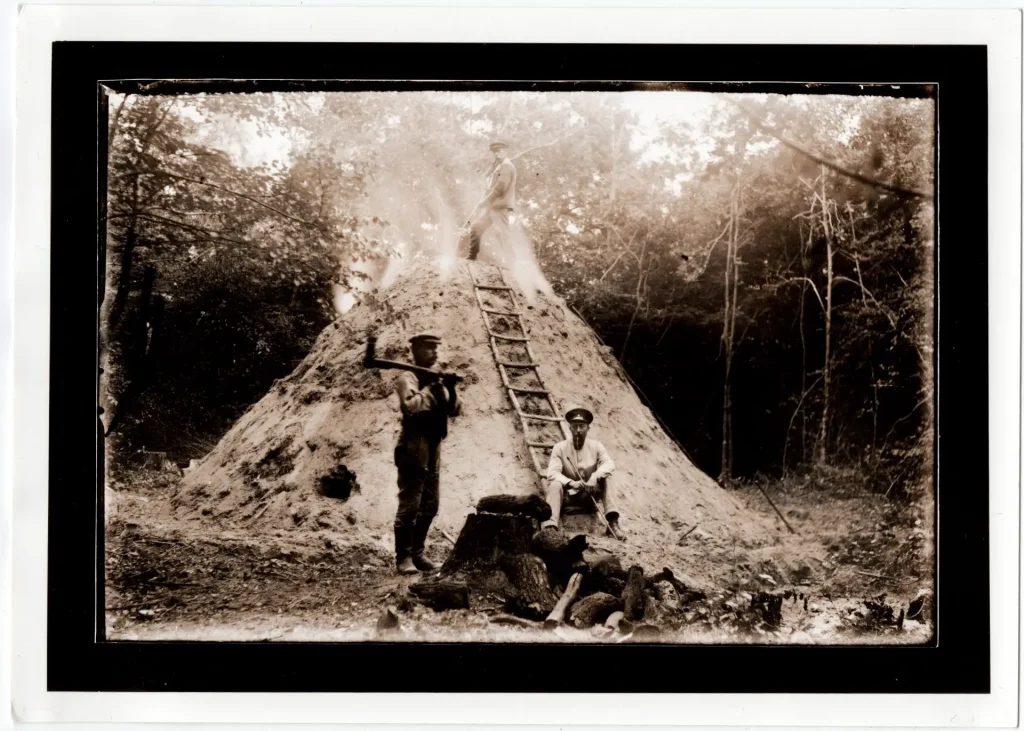
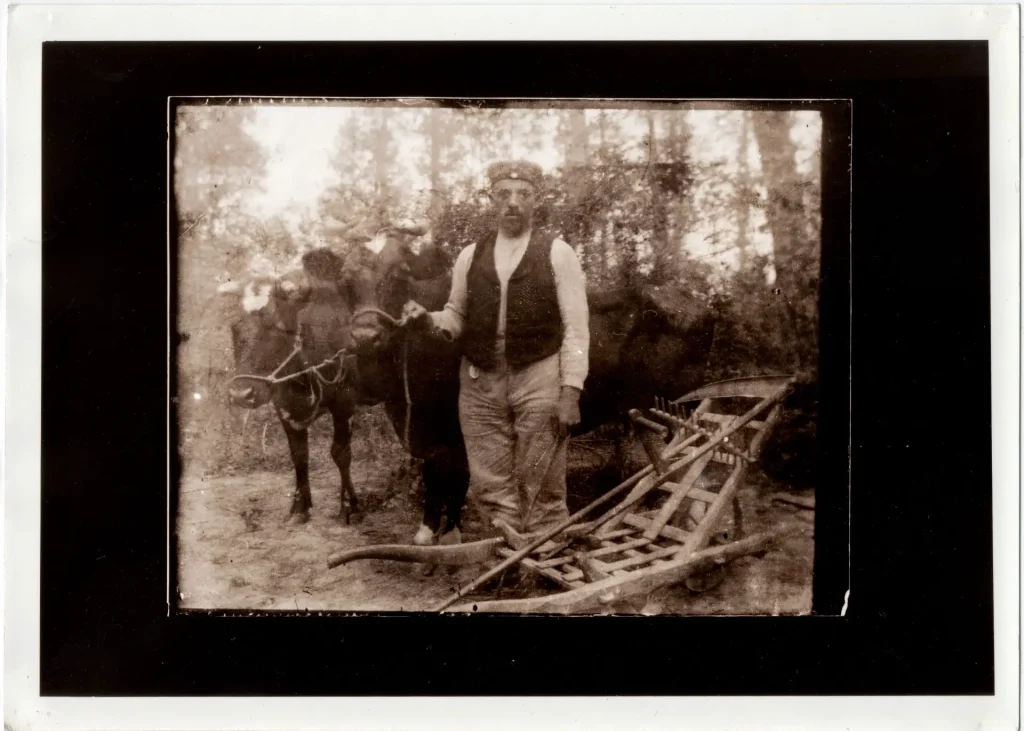
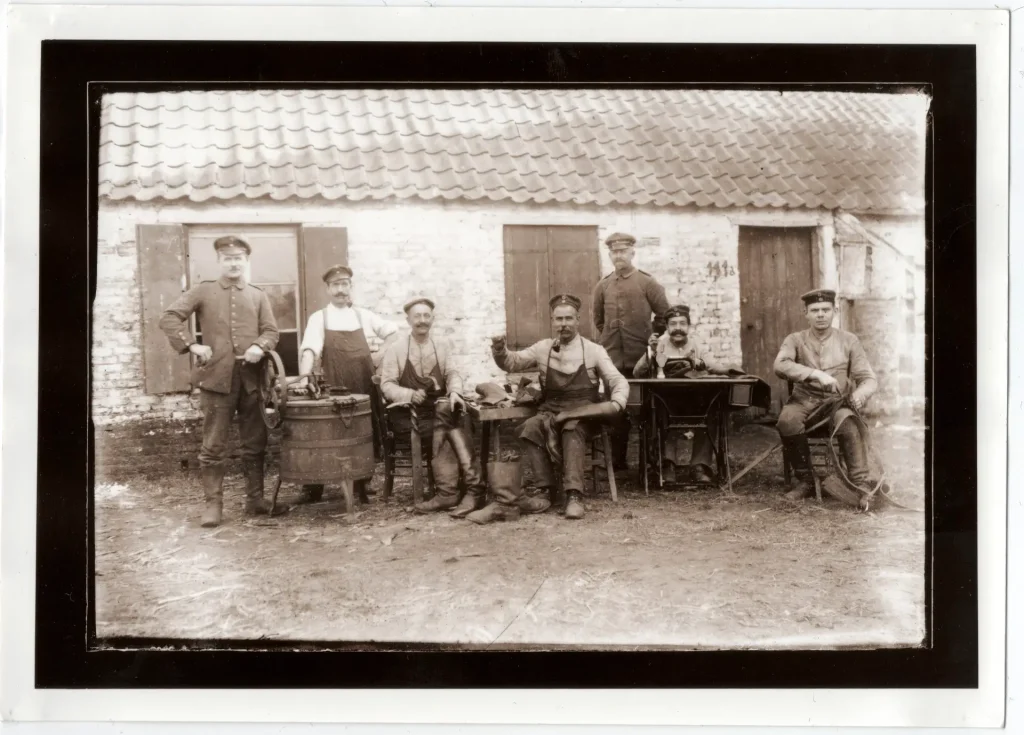
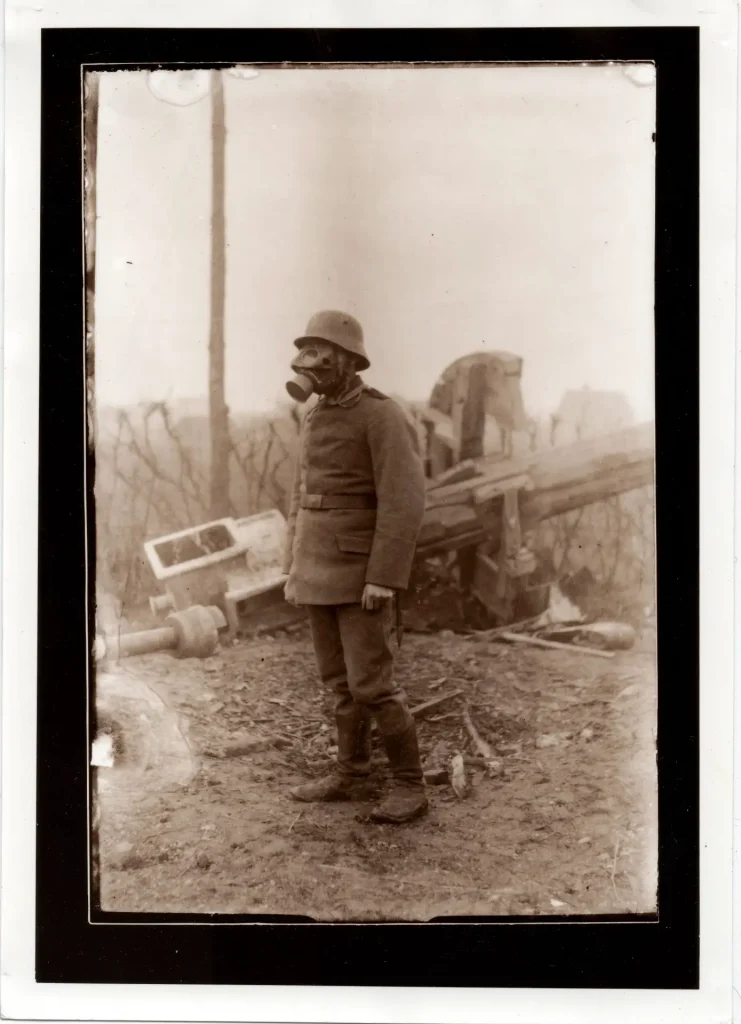
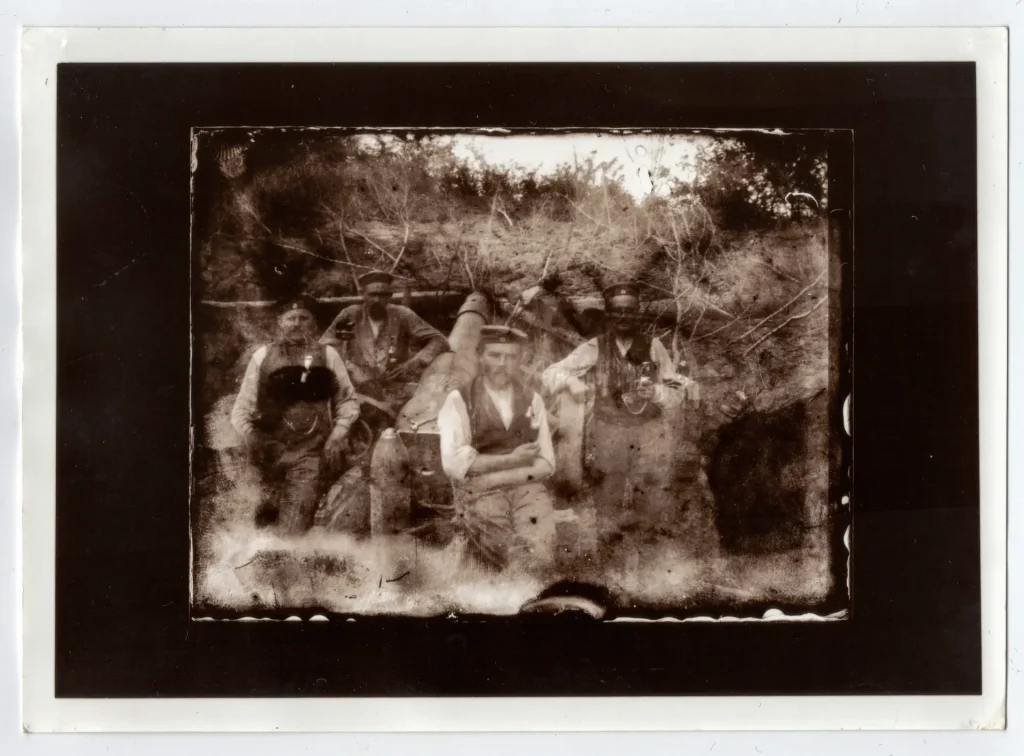
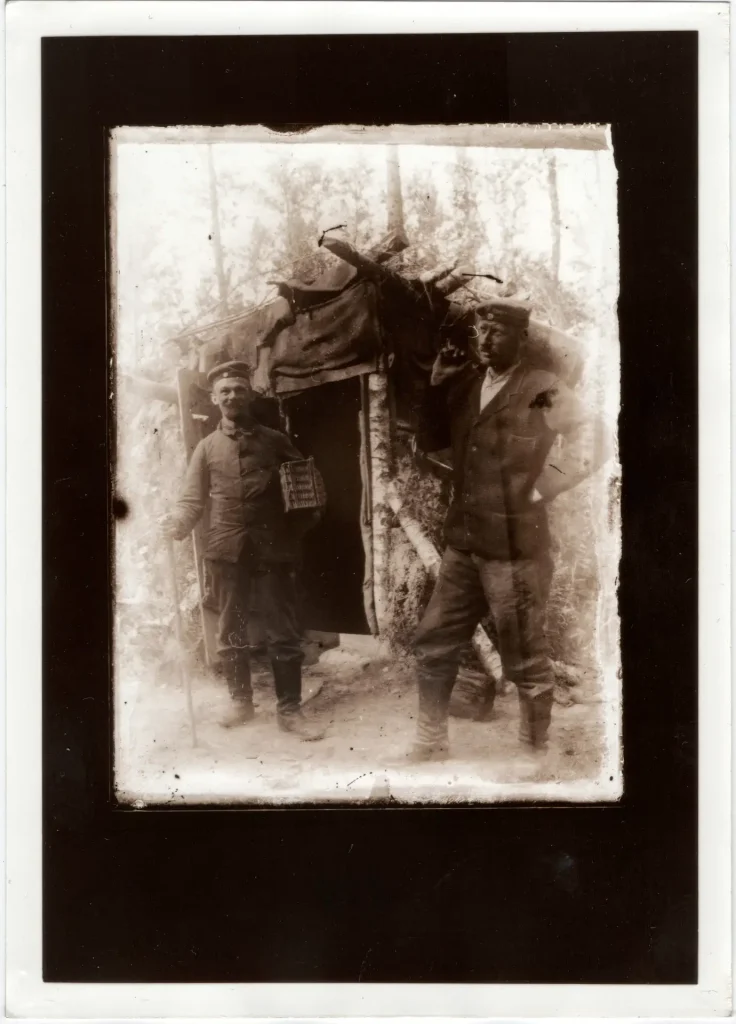
Conclusion
My neighbor was so pleased with the prints I made for him, he decided to give me the glass plates and the camera. He thought the camera could have been used to make the photographs, but judging from the negative sizes I’m sure it wasn’t the one. Though it could be from the right time period.
He also let me borrow the old soldier’s notebook for some time to look into it.
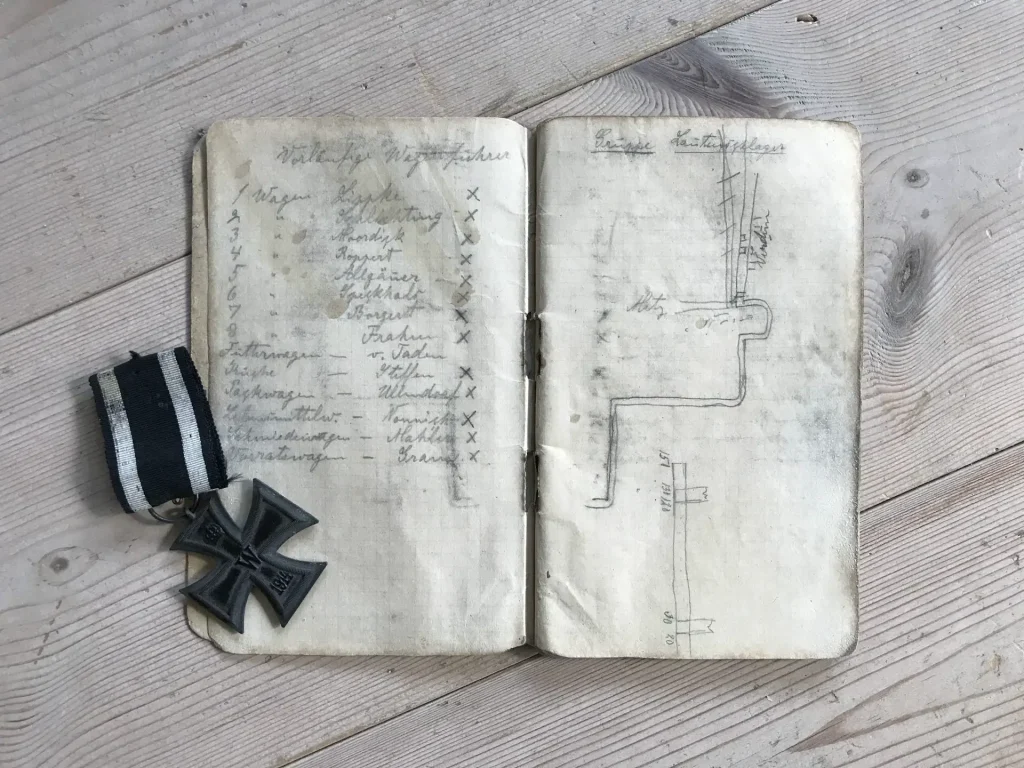
I think developing and copying old photographs like this is as close to time travel you can get, and I can’t help but wonder what might some of my old cameras have seen during their lifetime? My old Leica iii from 1934? Or my 18x24cm large format studio camera from ~1900? What photos might they have taken in thier lifetimes?
Thank you very much for reading.
You can find some of my own work at my website and on Instagram
Share this post:
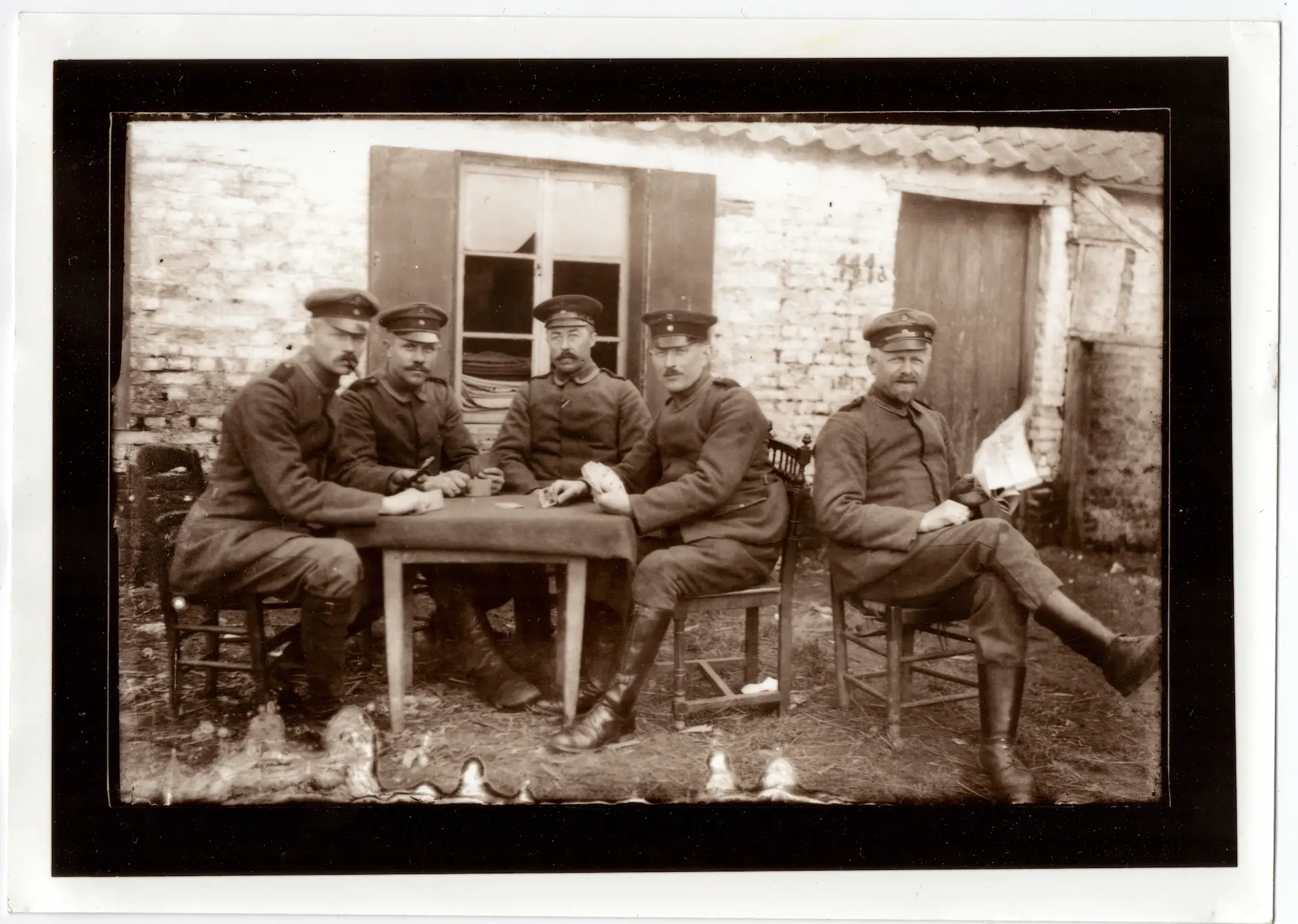








Comments
Nigel on Saving Glass Plates From WW1 – By Michell Boysen
Comment posted: 27/02/2022
Dean on Saving Glass Plates From WW1 – By Michell Boysen
Comment posted: 27/02/2022
Stephen Meese on Saving Glass Plates From WW1 – By Michell Boysen
Comment posted: 27/02/2022
- Indiana Jones, probably
Michael J on Saving Glass Plates From WW1 – By Michell Boysen
Comment posted: 28/02/2022
Ray on Saving Glass Plates From WW1 – By Michell Boysen
Comment posted: 01/03/2022
Regards
Ray.